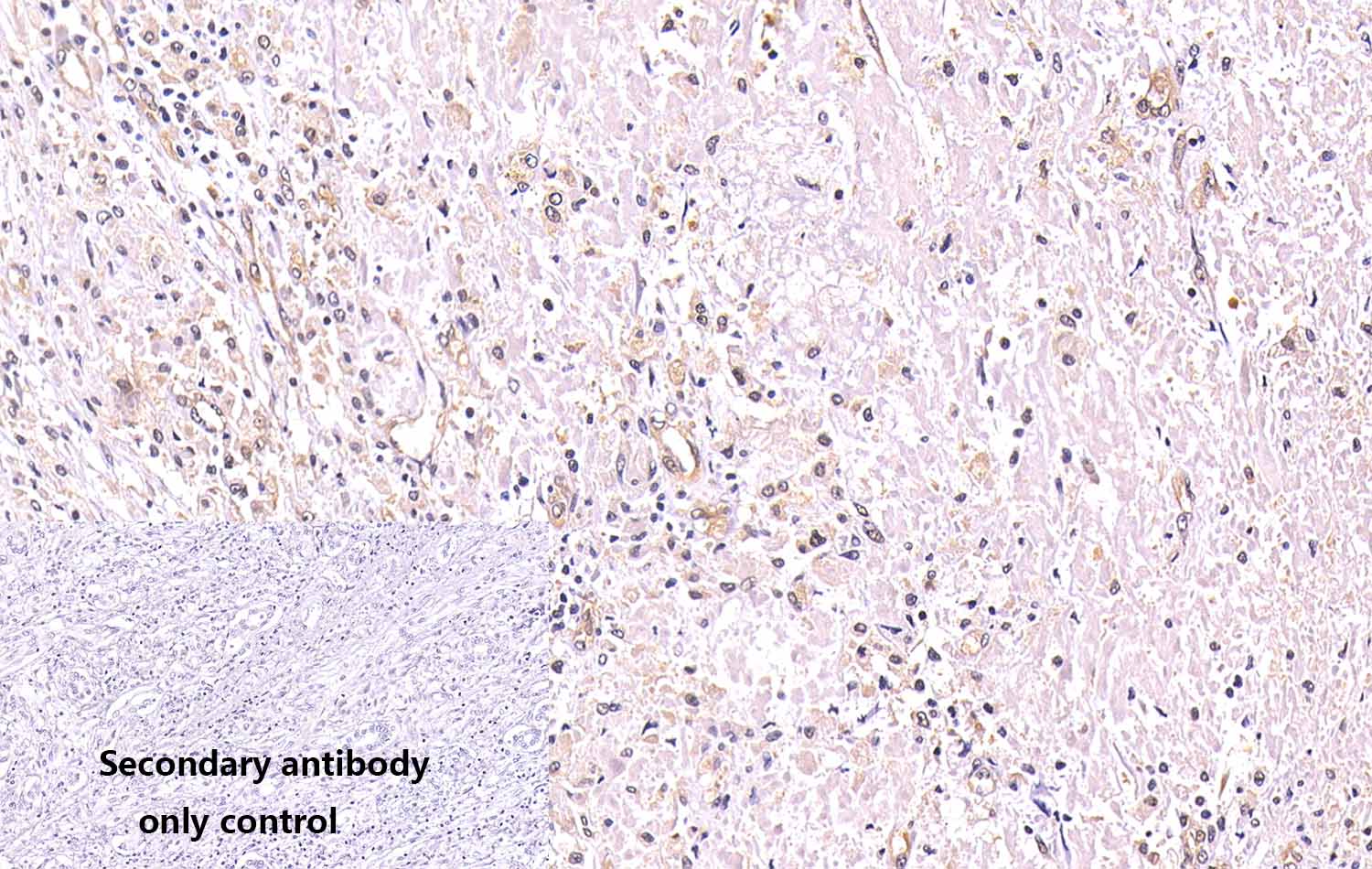
产品名称:Anti-HSP90AA1 Antibody, Mouse Monoclonal, G1F
克隆号:G1F
抗体亚型:/
经验证的应用:/
交叉反应:Predict reacts with: Human/Mouse/Rat
特异性:/
免疫原:/
制备方法:Produced in mouse immunized with HSP90AA1, and purified by antigen affinity chromatography.
来源:Monoclonal Mouse IgG
纯化:Immunogen affinity purified
缓冲液:Supplied in PBS, 50% glycerol and less than 0.02% sodium azide, PH7.4
偶联物:Unconjugated
浓度:Liquid
运输方式:This antibody is shipped as liquid solution at ambient temperature. Upon receipt, store it immediately at the temperature recommended.
储存条件:This antibody can be stored at 2℃-8℃ for one month without detectable loss of activity. Antibody products are stable for twelve months from date of receipt when stored at -20℃ to -80℃. Preservative-Free. Avoid repeated freeze-thaw cycles.
图片:
Figure1.Western blot analysis of extracts of various lane1 PC3(+++)、lane2 Rat brain tissue(+++)、lane3 Mouse brain tissue(+++)、lane4 K562(+++), using HSP90AA1 antibody (MA01006HuM10-G1F) at 2µg/ml Secondary antibody: HRP Goat Anti-Rabbit IgG (H+L) at 1:20000 dilution. Lysates/proteins: 25ug per lane.Blocking buffer: 3% nonfat dry milk in TBST. Detection: ECL Basic Kit . Exposure time: 10sec.
Figure2.Immunohistochemistry (Formalin/PFA-fixed paraffin-embedded sections) analysis of Human liver cancer sections labelling HSP90AA1 with purified MA01006HuM10-G1F at 10ug/ml dilution . Heat mediated antigen retrieval was performed using Heat mediated antigen retrieval using citrate buffer (PH6.0). Tissue was counterstained with Hematoxylin. Mouse specific IHC polymer detection kit HRP/DAB secondary antibody was used at 1:2000 dilution. PBS instead of the primary antibody was used as the negative control.
别称:HSP90A/HSPC1/HSPCA/HSP 86/HSP86/LAP-2/LPS-associated protein 2/
背景信息:HSP90 alpha. Members of the HSP90 family are essential chaperones found in all organisms from bacteria to humans. HSP90 complexes often interact with proteins in their native conformation and help to maintain/stabilize ligand-bound states. In this capacity, HSP90 plays a central role in function and turnover of many proteins involved in processes such as signal transduction, cell cycle control and apoptosis. HSP70 family members and HSP90 complexes frequently act in tandem, with the former participating in the folding of the client proteins and HSP90 stabilizing them in a way favorable for interaction with ligands. HSP90 forms complexes with an array of co-chaperones that both regulate its interaction with client proteins and stimulate its ATPase activity. By binding to different co-chaperones HSP90 acquires specificity for different families of client proteins. Many of the HSP90-client proteins are involved in tumor cell growth and HSP90 inhibitors are important as potential anticancer drugs. Inhibition of HSP90 also prevents the formation of protein aggregates in models of Parkinson disease, Huntington disease, and others. This recombinant protein may be used in conjunction with p23 (AP-170) in various in vitro protein refolding assays.
全称:Heat shock protein HSP 90-alpha (HSP90AA1)



